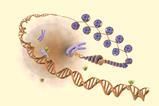Hundreds of peer-review reports dating from 1949 to 1954 have been released to the public by the UK’s national scientific academy. The Royal Society says that releasing the reports will allow researchers ‘to retrace the history of scientific peer-reviewing’.

Confidentiality laws meant that the peer review reports had to be kept private for 70 years. Following the expiry of that embargo, the 1600 newly-released reports are now available to view on the RS’s Science in the Making portal. The reports add to an archive of referee reports dating all the way back to 1831.
Among the newly released reports is a review by the Nobel prize-winning crystallographer Dorothy Hodgkin of one of Francis Crick and James Watson’s important early papers on the structure of DNA. In the report, Hodgkin suggests that the authors use white pigment to ‘touch up’ a photograph of their structural model of DNA to remove a reflection that is ‘very confusing to the eye’.
Another report relates to Alan Turing’s famous paper on reaction–diffusion processes that underpin natural phenomena where homogeneous systems give rise to patterns like stripes and spots – widely known today as Turing patterns.
‘Peer review is a vital part of all scientific endeavour. It is of course a crucial process of verification but also a unique meeting (or clashing) of minds,’ said Royal Society historian Louisiane Ferlier. ‘It’s exciting that readers can finally glimpse behind the scenes at the fascinating critiques and praises for some of the most groundbreaking papers and theories of the time, from the structure of DNA to the physiology of mushrooms.’
‘These newly released papers also demonstrate the arrival of more women in the Royal Society referee process in the late 1940s and 50s,’ she added. ‘Readers can delve into reports by some of our first female Fellows, Dorothy Hodgkin and Kathleen Lonsdale, who reviewed various papers by other prominent scientists. It is a wonderful way to better understand the influential role women played in the history of scientific publication.’

















No comments yet